Atomic cake is a revolutionary concept in the world of desserts, combining the art of baking with a bold, experimental twist. This innovative treat has taken the culinary world by storm, delighting both amateur and professional bakers with its explosive flavors and visually striking presentation. Atomic cake stands apart from traditional cakes by infusing unexpected flavors, textures, and even scientific elements to create a memorable dessert experience. It’s not just about taste; it’s about creating an immersive and dynamic treat that excites all the senses.
At the heart of atomic cake lies a fusion of unique ingredients, from rich chocolate ganache to tangy fruit fillings, often with vibrant color layers that mimic the aesthetic of atomic structures. Each slice promises a delightful combination of textures; fluffy sponges, creamy fillings, and crunchy toppings—that come together to form an unforgettable taste explosion. Some versions of the atomic cake even incorporate unexpected elements like liquid nitrogen or dry ice to give it a futuristic, theatrical presentation that draws the attention of onlookers as much as the first bite captures the taste buds.
Whether it’s for a birthday, special occasion, or simply a fun twist on a classic dessert, atomic cake offers a creative and delicious alternative to traditional cakes. The growing popularity of this dessert reflects society’s increasing interest in experimental food and culinary creativity, where bakers push the boundaries of flavor, technique, and presentation. Atomic cake represents the perfect intersection of science, art, and pastry, making it a must-try for anyone with a love for bold and innovative treats.
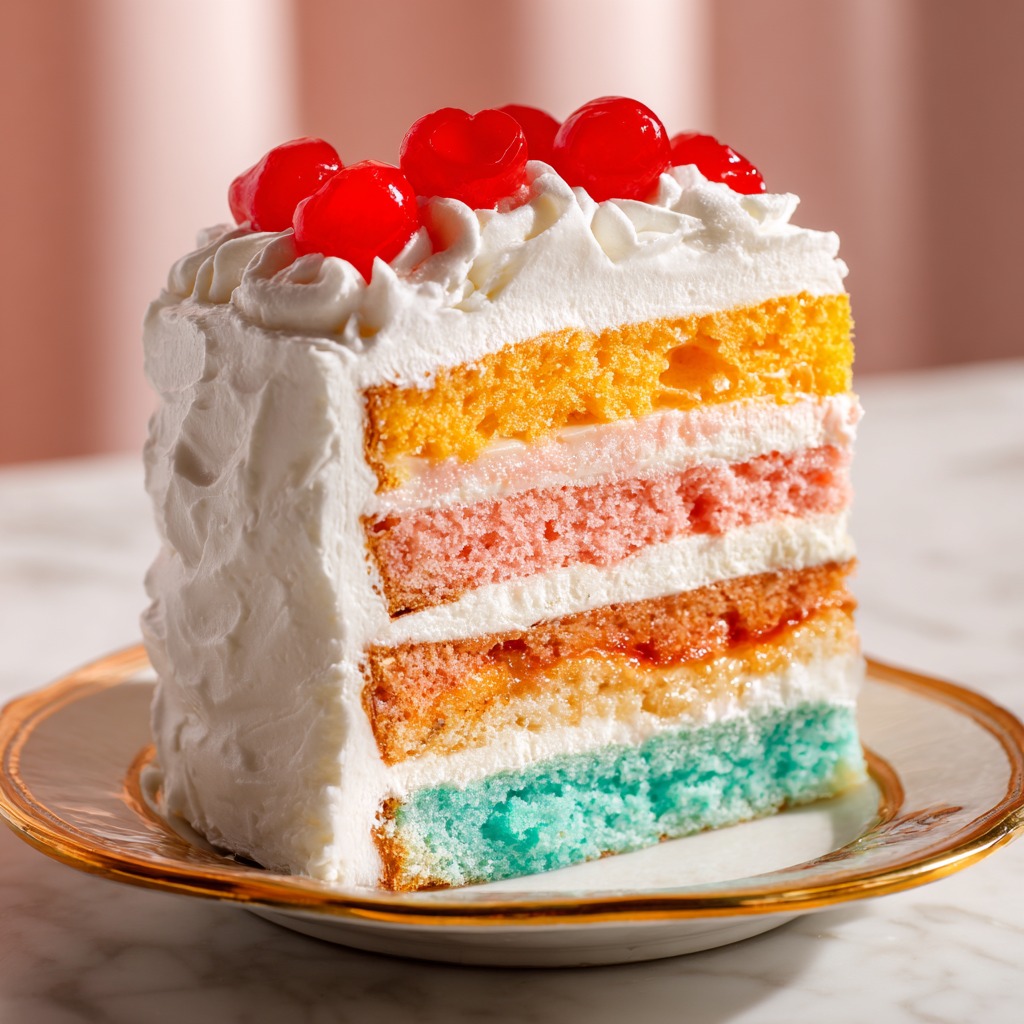
- Origins of Atomic Cake
- Key Ingredients
- 1. Flour: The Base of the Cake
- 2. Sugar: Sweetness with a Twist
- 3. Butter or Oil: The Fat Component
- 4. Eggs: Binding and Texture
- 5. Milk or Cream: Moisture and Flavor
- 6. Flavor Enhancers: Bold, Unexpected Additions
- 7. Food Coloring and Natural Dyes: Explosive Visual Appeal
- 8. Baking Powder/Soda: Leavening the Cake
- 9. Ganache, Cream Cheese, or Whipped Cream: The Filling or Frosting
- 10. Special Ingredients for Interactive Effects (Optional)
- Step-by-Step Instructions
- Best Occasions to Make Atomic Cake
- 1. Birthday Celebrations
- 2. Graduations and Milestone Achievements
- 3. Themed Parties (Science or Futuristic Theme)
- 4. Weddings (for Fun or Quirky Weddings)
- 5. Holiday Gatherings (New Year’s Eve, Halloween, etc.)
- 6. Corporate Events and Launch Parties
- 7. Christmas or Holiday Celebrations
- 8. Anniversaries (Personal or Corporate)
- 9. Special Family Gatherings or Reunions
- 10. Bake-offs or Culinary Competitions
- Tips & Tricks for Perfect
- 1. Use Room Temperature Ingredients
- 2. Don’t Overmix the Batter
- 3. Choose the Right Cake Pan
- 4. Incorporate Bold Flavors Carefully
- 5. Use Gel Food Coloring for Bright, Vibrant Layers
- 6. Baking Time and Temperature
- 7. Add Moisture with Syrups or Glazes
- 8. Chill Layers Before Assembling
- 9. Layering and Frosting Tips
- 10. Add a Fun Element with Dry Ice or Liquid Nitrogen
- 11. Decorative Elements: Get Creative
- 12. Serve at the Right Temperature
- 13. Plan Ahead for Layering and Colors
- 14. Don’t Be Afraid to Experiment
- Variations of Atomic Cake
- 1. Chocolate Atomic Cake
- 2. Fruit-Flavored Atomic Cake
- 3. Red Velvet Atomic Cake
- 4. Vegan Atomic Cake
- 5. Matcha Atomic Cake
- 6. Caramel & Salted Pretzel Atomic Cake
- 7. Coffee and Hazelnut Atomic Cake
- 8. Gluten-Free Atomic Cake
- 9. Peanut Butter & Jelly Atomic Cake
- 10. S’mores Atomic Cake
- 11. Tiramisu Atomic Cake
- 12. Rainbow Atomic Cake
- hare Your Twist!
Origins of Atomic Cake
The origins of the “atomic cake” are not tied to a specific historical event or figure, but rather to the growing trend of experimental baking and the desire to push the boundaries of traditional desserts. This unique cake concept emerged in the 21st century as chefs and bakers sought to combine science, art, and technology in new ways, resulting in visually stunning and creatively flavored desserts. The term “atomic” was likely adopted to represent the explosive, multi-layered experience that the cake offers—its vibrant colors, bold flavors, and sometimes even elements that seem to “explode” or surprise the eater.
The idea of incorporating scientific principles into food design isn’t entirely new. The culinary world has long been fascinated by the intersection of food and science, with techniques like molecular gastronomy gaining traction in the late 20th century. The atomic cake takes inspiration from this movement, blending unconventional ingredients and methods such as liquid nitrogen or dry ice to create an element of surprise, mimicking the excitement of an atomic reaction. Bakers began to experiment with color contrasts, textures, and flavors that resemble the look and feel of atoms, molecules, or other scientific phenomena, giving rise to the modern atomic cake.
While there isn’t a single “father” of the atomic cake, it can be seen as a product of the growing desire to innovate and capture the imagination of modern diners. It symbolizes the evolution of desserts from simple sweet treats to complex, engaging experiences that engage all the senses—taste, sight, and even sound. As its popularity continues to grow, atomic cake has become a symbol of modern pastry-making, attracting attention not only for its taste but also for the creative spirit behind its conception.
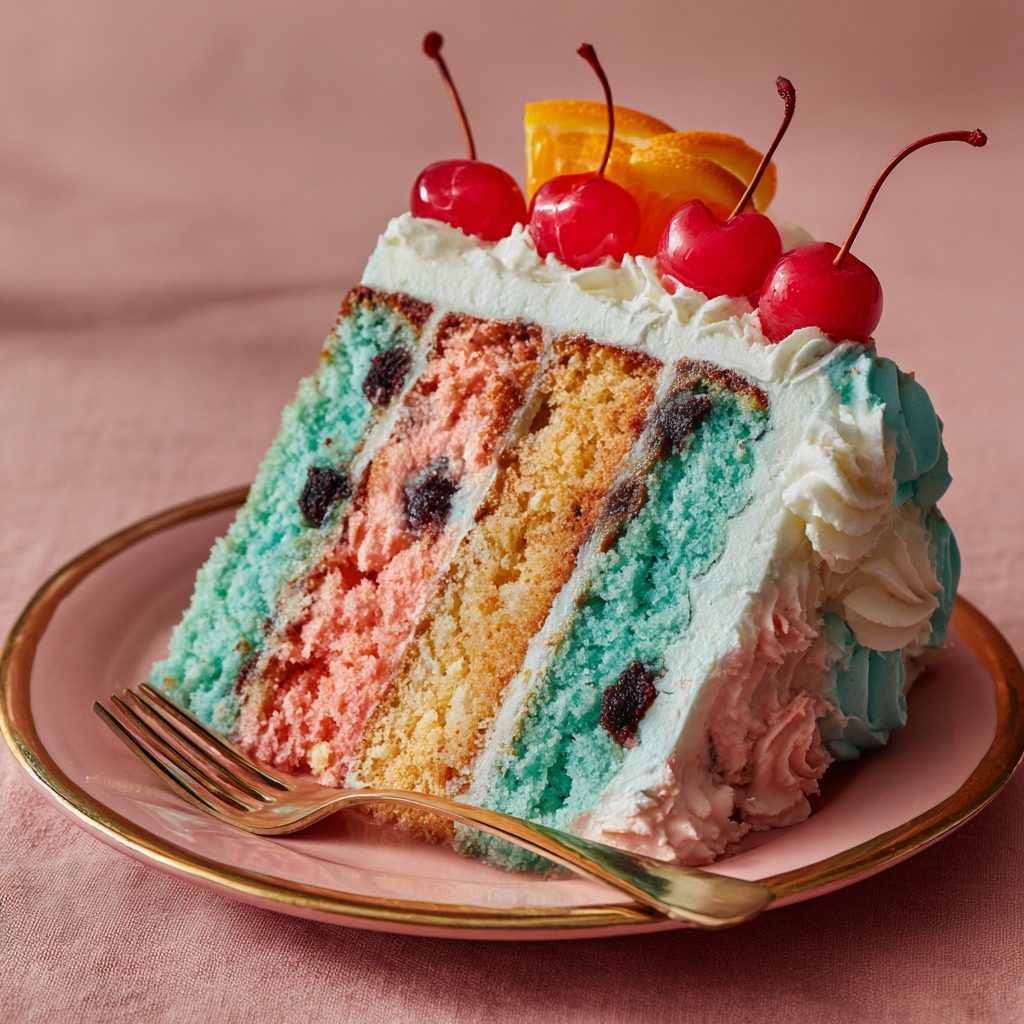
Key Ingredients
1. Flour: The Base of the Cake
Like any traditional cake, flour is an essential ingredient in the atomic cake. It forms the structure and texture of the cake, providing the foundation for the other elements. Typically, a combination of all-purpose flour and sometimes a lighter flour, such as cake flour, is used to achieve a soft, tender crumb. The flour’s role is essential in balancing the cake’s final texture while also serving as a neutral backdrop for the more explosive and experimental ingredients.
2. Sugar: Sweetness with a Twist
Sugar plays a critical role in balancing the other bold and intense flavors in an atomic cake. While traditional cakes use refined sugar, many atomic cakes use brown sugar, honey, or even maple syrup to add depth and complexity to the sweetness. The sugar not only sweetens the cake but also contributes to the moisture and color of the cake’s texture. Sometimes, it is paired with flavored syrups or infused sugars to enhance the overall flavor experience, adding to the cake’s unique and experimental profile.
3. Butter or Oil: The Fat Component
To ensure a moist and tender cake, butter or oil is an essential ingredient. The fat helps to create a light and airy texture while also contributing to the richness of the cake. Some bakers opt for butter, which gives the cake a luxurious flavor, while others prefer vegetable or coconut oil for a lighter, less greasy option. The type of fat used can influence the texture and flavor, depending on the overall flavor profile the baker wants to achieve.
4. Eggs: Binding and Texture
Eggs are crucial in atomic cake recipes as they bind all the ingredients together, providing structure and stability to the cake. They also contribute to the cake’s rise and texture by helping it maintain moisture and fluffiness. Eggs help with the emulsification of fat and water, ensuring a smooth batter that results in a tender crumb. Depending on the recipe, eggs can also add flavor depth, especially when paired with certain flavorings or when using egg yolks for a richer cake.
5. Milk or Cream: Moisture and Flavor
Milk or cream is used to provide moisture and richness to the batter. The liquid helps to combine the dry ingredients and ensures that the cake’s crumb remains soft and moist after baking. Milk is often preferred for a subtle flavor, but heavier cream can be used for a denser, richer result. Some atomic cakes even incorporate flavored milks, such as chocolate or fruit-infused varieties, to further enhance the flavor profile.
6. Flavor Enhancers: Bold, Unexpected Additions
What truly sets atomic cake apart are the flavor enhancers that give it its “explosive” nature. These may include exotic ingredients like:
- Tart fruits (e.g., passion fruit, pomegranate, or citrus) that add tang and vibrancy.
- Spices (e.g., cinnamon, cardamom, or even chili) that provide unexpected heat or depth.
- Alcohol (e.g., rum, whiskey, or flavored liqueurs) that adds complexity and sophistication.
These ingredients are used in moderation, adding layers of flavor that surprise the taste buds with every bite.

7. Food Coloring and Natural Dyes: Explosive Visual Appeal
Atomic cake is known for its visually vibrant appearance, and food coloring plays a key role in achieving this effect. Bakers often use both synthetic food coloring or natural dyes (such as beet juice, spirulina, or turmeric) to create layers of bold and contrasting colors that mimic atomic or molecular structures. The bright and lively hues are not only eye-catching but help convey the cake’s adventurous spirit. The use of color gradients, marble effects, or even speckled designs can create a visually striking dessert that complements its bold flavors.
8. Baking Powder/Soda: Leavening the Cake
To give the atomic cake its signature lightness, baking powder or baking soda is used as a leavening agent. These ingredients allow the cake to rise, creating a fluffy and airy texture. Baking powder is typically preferred for cakes that need a gentle lift, while baking soda may be used if the recipe includes acidic ingredients (such as buttermilk or citrus) to activate the leavening process.
9. Ganache, Cream Cheese, or Whipped Cream: The Filling or Frosting
Many atomic cakes feature rich fillings or frosting that enhance the overall experience. Some bakers choose chocolate ganache for a smooth, rich filling, while others might opt for tangy cream cheese or whipped cream to contrast the sweetness of the cake. The frosting or filling is where bakers have the most freedom to get creative—using flavors like matcha, salted caramel, or even marshmallow to complement the cake’s unique flavor profile. For those going for an extra “atomic” effect, some frosting elements might be made to ooze, creating a dramatic visual appeal when cut.
10. Special Ingredients for Interactive Effects (Optional)
One of the more theatrical aspects of atomic cake is the incorporation of special ingredients like liquid nitrogen, dry ice, or edible glitter. Liquid nitrogen can freeze the surface of the cake to create a fog effect when exposed to air, while dry ice can be used for a smoking or bubbling presentation. These effects not only make the atomic cake visually dynamic but also add to the “explosive” experience of eating it.
Step-by-Step Instructions
1. Prepare Your Ingredients
Before starting, make sure all your ingredients are measured and ready. This will ensure a smooth baking process. The key ingredients you’ll need include:
- Flour
- Sugar (white and brown)
- Butter or oil
- Eggs
- Milk or cream
- Baking powder
- Food coloring (if desired)
- Flavor enhancers (such as fruit purees, alcohol, or spices)
- Filling ingredients like ganache, cream cheese, or whipped cream
- Optional: Liquid nitrogen or dry ice for dramatic effects
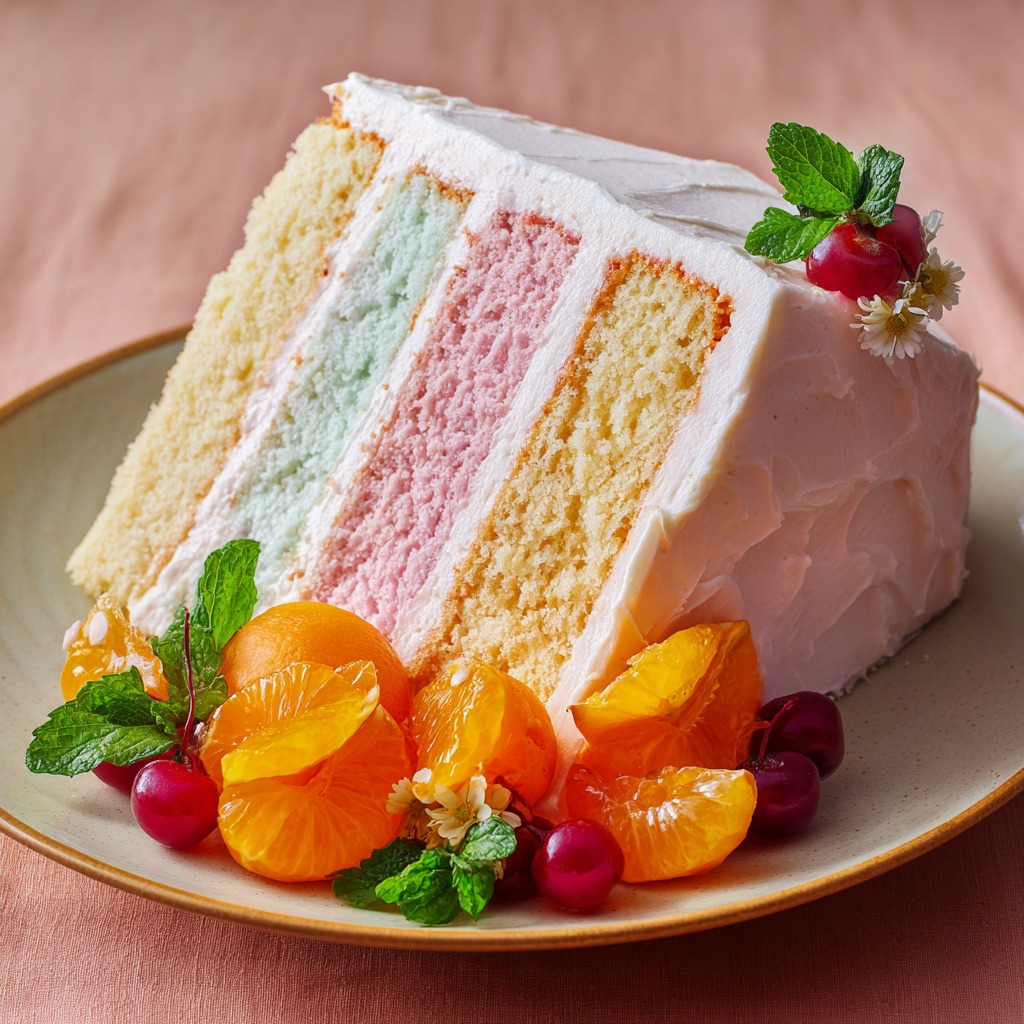
2. Preheat the Oven
Preheat your oven to 350°F (175°C) or the temperature specified in your recipe. This ensures that the cake bakes evenly. Grease your cake pans with butter or cooking spray, and lightly dust them with flour to prevent the cake from sticking.

3. Prepare the Cake Batter
- Mix the Dry Ingredients:
- In a large bowl, sift together the flour, sugar, and baking powder. If using spices, such as cinnamon or cardamom, mix them in with the dry ingredients.
- Cream the Butter and Sugar:
- In a separate bowl, beat the butter (or oil) and sugar together until light and fluffy. This step helps to incorporate air into the batter, making the cake lighter.
- Add Eggs:
- Add eggs one at a time, beating well after each addition. This helps to ensure that the eggs are fully incorporated into the mixture, providing structure to the cake.
- Add Liquid Ingredients:
- Gradually add milk or cream to the wet mixture. If you’re using any liquid flavor enhancers like rum or fruit juices, add them now. Mix until the batter is smooth.
- Combine Dry and Wet Ingredients:
- Slowly add the dry ingredients to the wet mixture in small batches, mixing gently to avoid overmixing. Scrape down the sides of the bowl as needed to ensure everything is incorporated evenly.
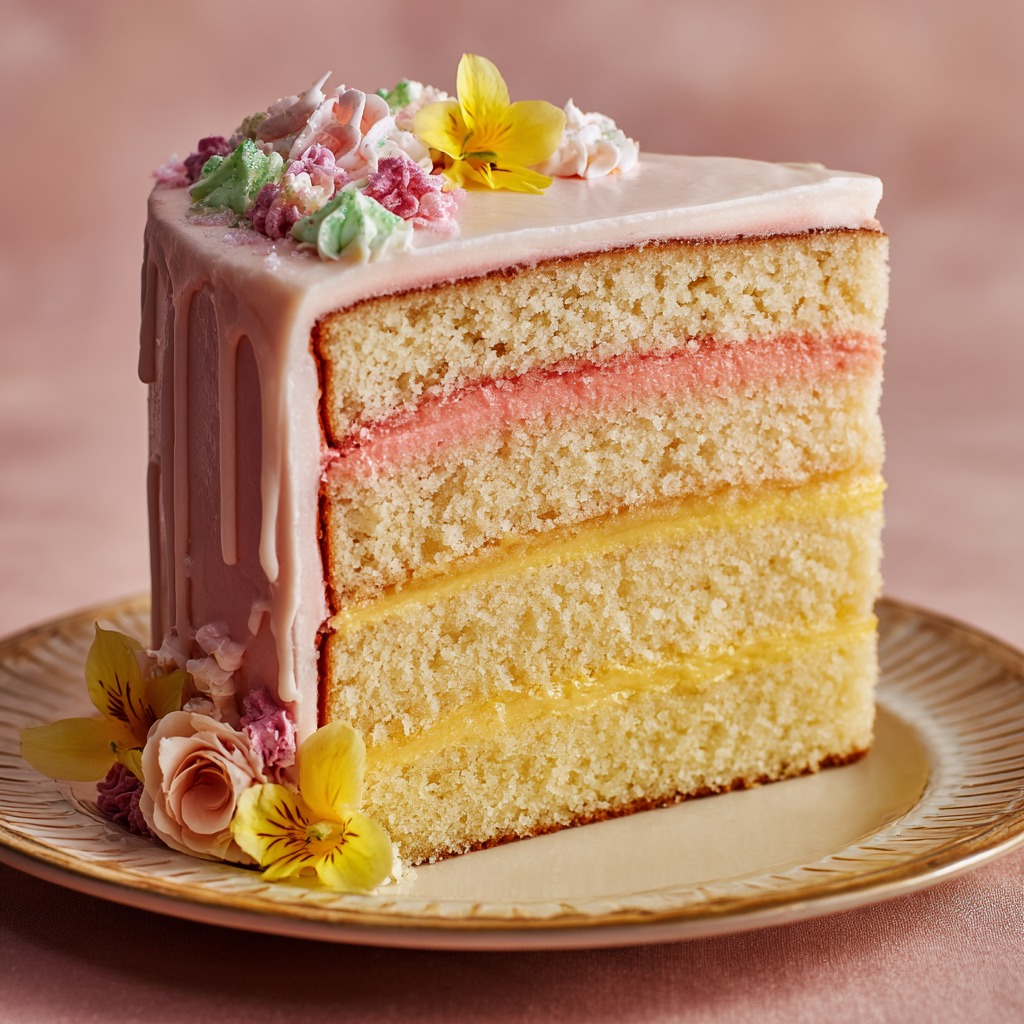
4. Add Color and Flavor Enhancements
- Divide the Batter (Optional):
- If you want a multi-colored effect, divide the batter into separate bowls, one for each color. Add a few drops of food coloring to each portion and mix well until the color is evenly distributed.
- Add Flavor Enhancers:
- This is where you can get creative with flavors. Add fruit purees, spices, or alcohol (such as whiskey or citrus liqueur) to the batter. Adjust according to taste.
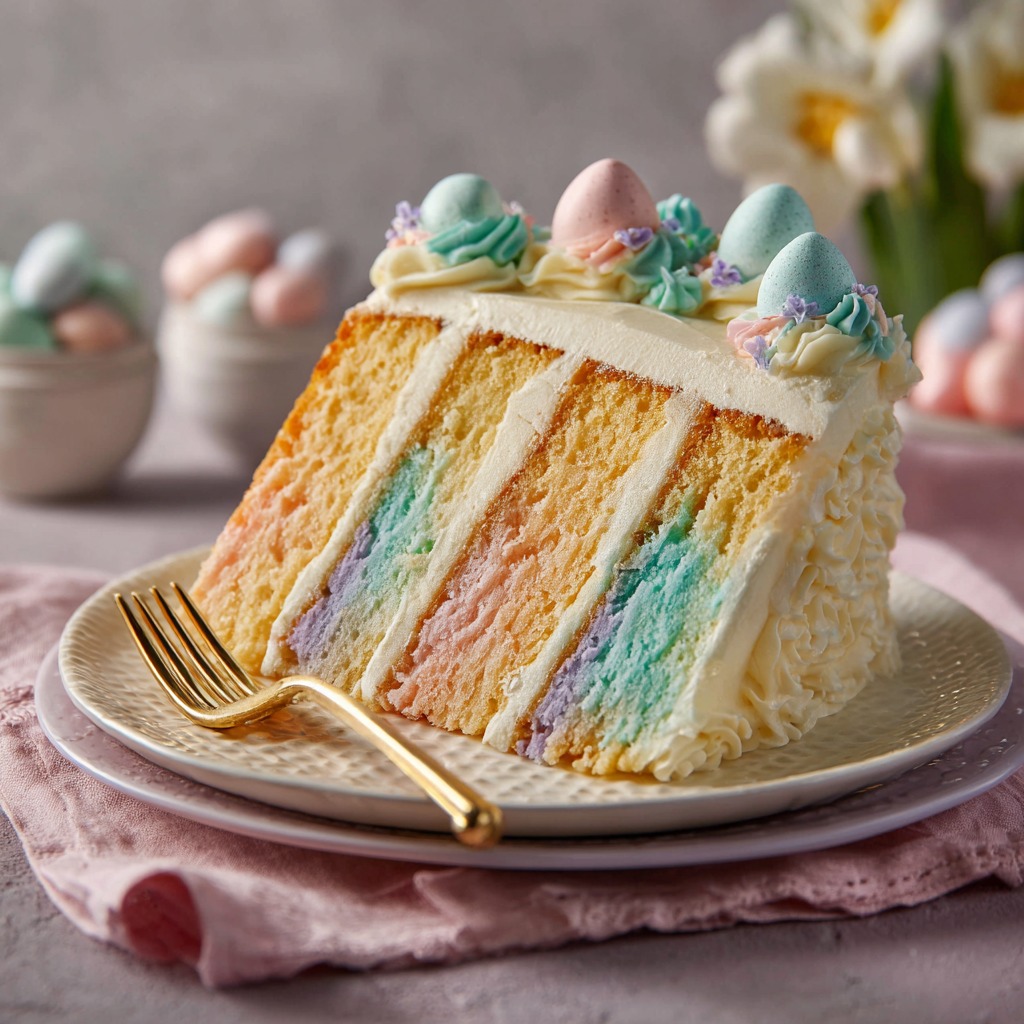
5. Bake the Cake Layers
- Pour the Batter into the Pans:
- Pour the different colored batters into the prepared cake pans, alternating colors if you want a marbled effect. If you want a layered look, alternate layers of batter in the pans.
- Bake:
- Place the pans in the preheated oven and bake for about 25-30 minutes (or as per the recipe instructions) until a toothpick inserted into the center comes out clean. The time may vary depending on your cake’s size and thickness.
- Cool the Layers:
- Allow the cake layers to cool in the pans for about 10 minutes before transferring them to a wire rack to cool completely.
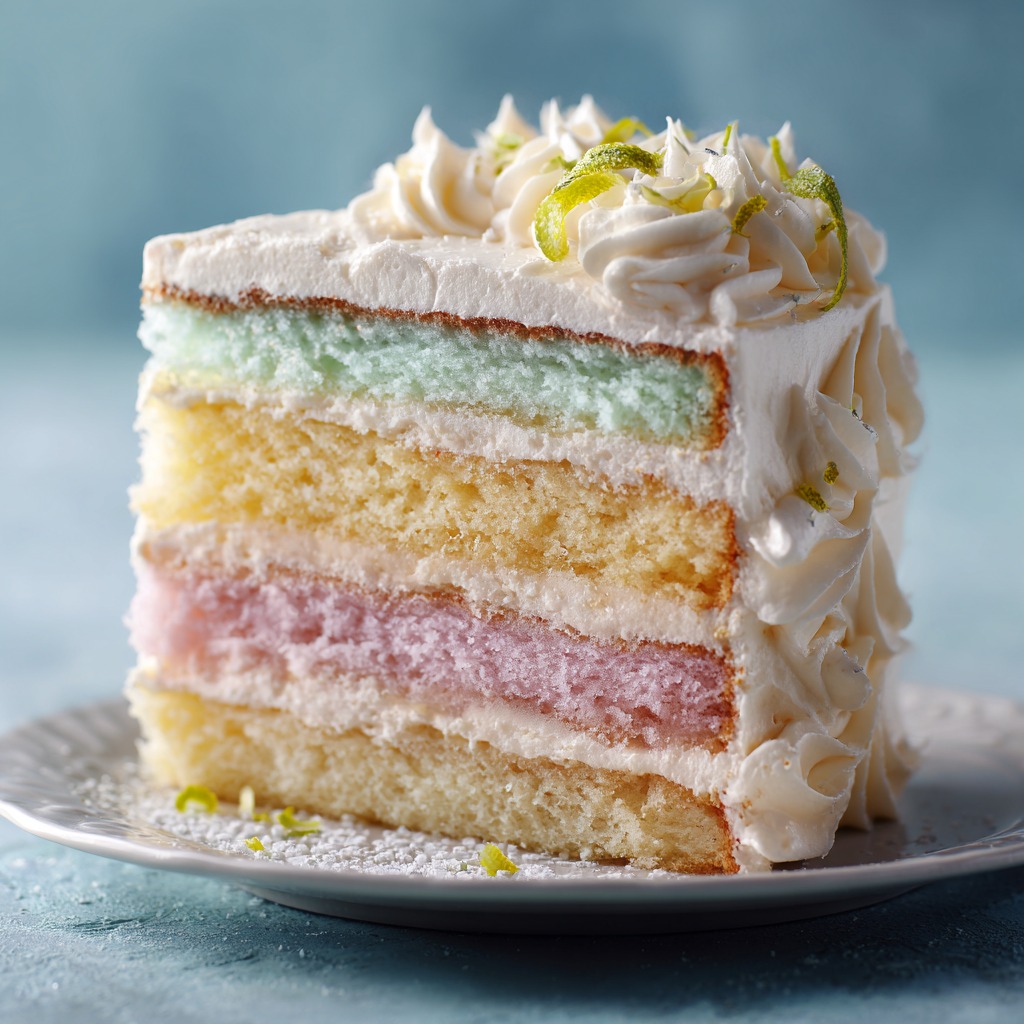
6. Prepare the Frosting or Filling
- Make the Frosting:
- While the cake layers cool, prepare your frosting or filling. You can use a rich chocolate ganache, whipped cream, cream cheese frosting, or a tangy fruit filling—whatever complements your cake flavors.
- Optional: Add Special Effects:
- If you’re using liquid nitrogen or dry ice for dramatic effect, make sure to have it prepared and ready for presentation. If using dry ice, ensure it’s in a safe container that doesn’t come into direct contact with the food.
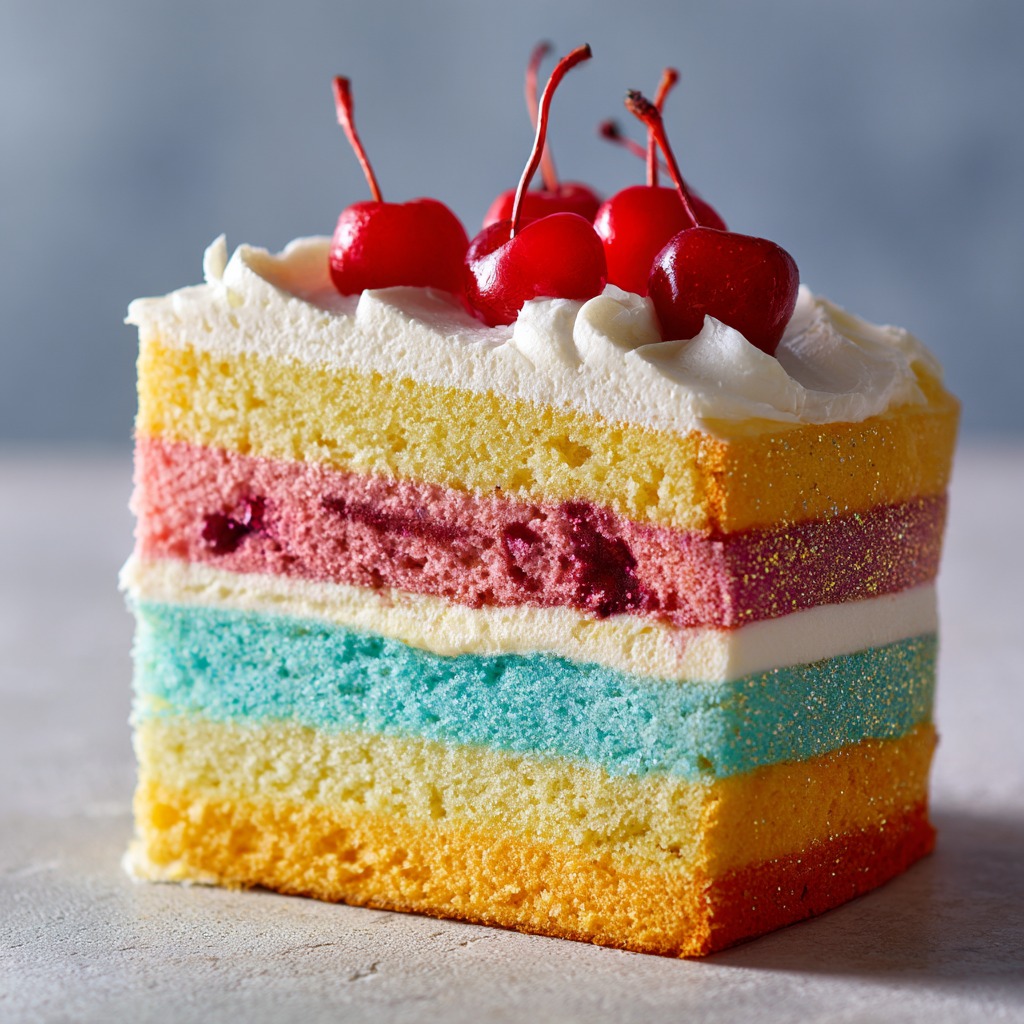
7. Assemble the Atomic Cake
- Layer the Cake:
- Once the cake layers have completely cooled, spread a layer of frosting or filling on top of the first cake layer. Place the second cake layer on top and repeat the process until all layers are stacked.
- Frost the Cake:
- Once the layers are stacked, spread frosting or filling over the top and sides of the cake. Use a spatula to smooth it out and create an even coating.
- Add Color and Design Details:
- Decorate the cake with additional food coloring, edible glitter, or other decorative elements. If you’re going for a more “atomic” look, use vibrant colors, geometric patterns, or even edible paints to mimic the look of atoms or molecules.
8. Add Theatrical Elements (Optional)
- Incorporate Dry Ice or Liquid Nitrogen:
- For a dramatic presentation, you can place small pieces of dry ice around the cake’s base or use liquid nitrogen to create a fog effect. For safety, ensure you handle dry ice or liquid nitrogen carefully and do not allow it to come into direct contact with food.
- Serve and Enjoy:
- When ready to serve, cut the cake, ensuring that each slice shows the vibrant colors and layers. The cake’s bold presentation will make it a memorable dessert for any occasion.

9. Store Leftovers
If you have any leftover cake, store it in an airtight container at room temperature for up to 2-3 days, or in the fridge for a longer shelf life. Make sure the cake is fully cooled before storing to avoid sogginess.
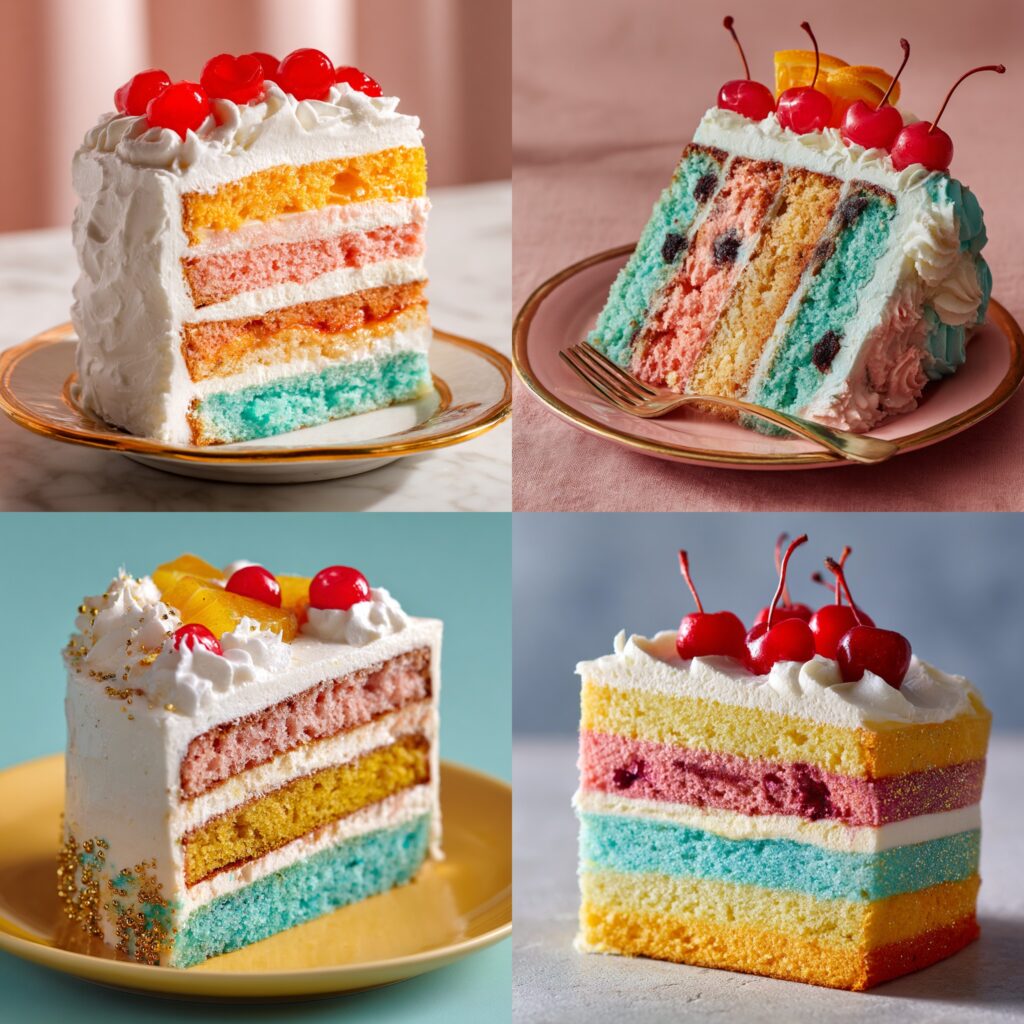
Best Occasions to Make Atomic Cake
1. Birthday Celebrations
Atomic cakes make for an unforgettable centerpiece at birthday parties. Whether it’s for a child’s birthday with a fun, colorful design or an adult’s celebration with more sophisticated flavors and presentation, this bold and vibrant cake adds excitement and drama. Its multi-layered design and explosive flavors bring an element of surprise and fun, making it the perfect choice for anyone looking to make their birthday extra special.
2. Graduations and Milestone Achievements
Graduations and other significant milestones are perfect occasions to celebrate with an atomic cake. This cake’s innovative design and memorable impact symbolize the achievement and excitement of the moment. Whether it’s for a high school graduate or someone celebrating a major career accomplishment, an atomic cake is a fitting way to mark the occasion with flair and style.
3. Themed Parties (Science or Futuristic Theme)
If you’re hosting a party with a science, futuristic, or “space” theme, an atomic cake is an ideal dessert choice. Its vibrant colors, layered look, and bold presentation align perfectly with these themes, making it a showstopper for events that explore the wonders of the universe or cutting-edge technology. Whether it’s a science fiction-inspired party or a celebration of technological advancement, the atomic cake fits the theme beautifully.
4. Weddings (for Fun or Quirky Weddings)
While traditional wedding cakes are often the norm, an atomic cake can be a fun, quirky alternative for couples who want something different. If the wedding has a playful or unconventional theme, the cake will add an unexpected twist. The bold flavors, unique appearance, and interactive presentation (with dry ice or liquid nitrogen) make it an excellent choice for those looking to break from tradition and impress their guests.
5. Holiday Gatherings (New Year’s Eve, Halloween, etc.)
Holidays like New Year’s Eve or Halloween offer the perfect backdrop for an atomic cake. For New Year’s, the bold flavors and “explosive” presentation fit the celebratory mood, while Halloween’s love for spooky, dramatic displays aligns with the bold and colorful nature of this cake. Whether for a family dinner or a large celebration, the atomic cake brings an element of fun and wonder to the table.
6. Corporate Events and Launch Parties
Corporate events or product launch parties can greatly benefit from an atomic cake. As an attention-grabbing dessert, it’s ideal for impressing clients, colleagues, or guests. It can also be tied to a product or brand, especially if the company’s image involves innovation, creativity, or technology. The boldness of the atomic cake mirrors the cutting-edge spirit of many modern companies and events.
7. Christmas or Holiday Celebrations
While traditional Christmas desserts like fruitcake or pies are beloved, the atomic cake offers a fun twist on the classic holiday spread. You can incorporate seasonal flavors such as gingerbread, peppermint, or cranberry into the cake to tie it to the festive mood. The vibrant colors and theatrical presentation also make it an ideal choice for impressing holiday guests and creating a lasting impression during family gatherings.
8. Anniversaries (Personal or Corporate)
An atomic cake is also a great way to celebrate personal or corporate anniversaries. For personal anniversaries, its uniqueness can symbolize the excitement and special nature of the relationship. For a corporate anniversary, it’s a bold way to mark years of growth and achievement, especially for businesses involved in technology, innovation, or creative industries.
9. Special Family Gatherings or Reunions
For family reunions or special family celebrations, the atomic cake can serve as a fun and engaging dessert. Its vibrant colors and dramatic presentation make it a conversation starter, and everyone will appreciate the unique flavors and textures. Whether you’re celebrating a holiday or simply enjoying time together, an atomic cake can elevate the occasion and create lasting memories.
10. Bake-offs or Culinary Competitions
If you’re participating in a baking competition or cook-off, an atomic cake can be a perfect entry. Its eye-catching design and innovative flavors are sure to stand out from traditional cakes. You can show off your creativity and technical skills by incorporating unique elements like liquid nitrogen or intricate color patterns that reflect your baking expertise.
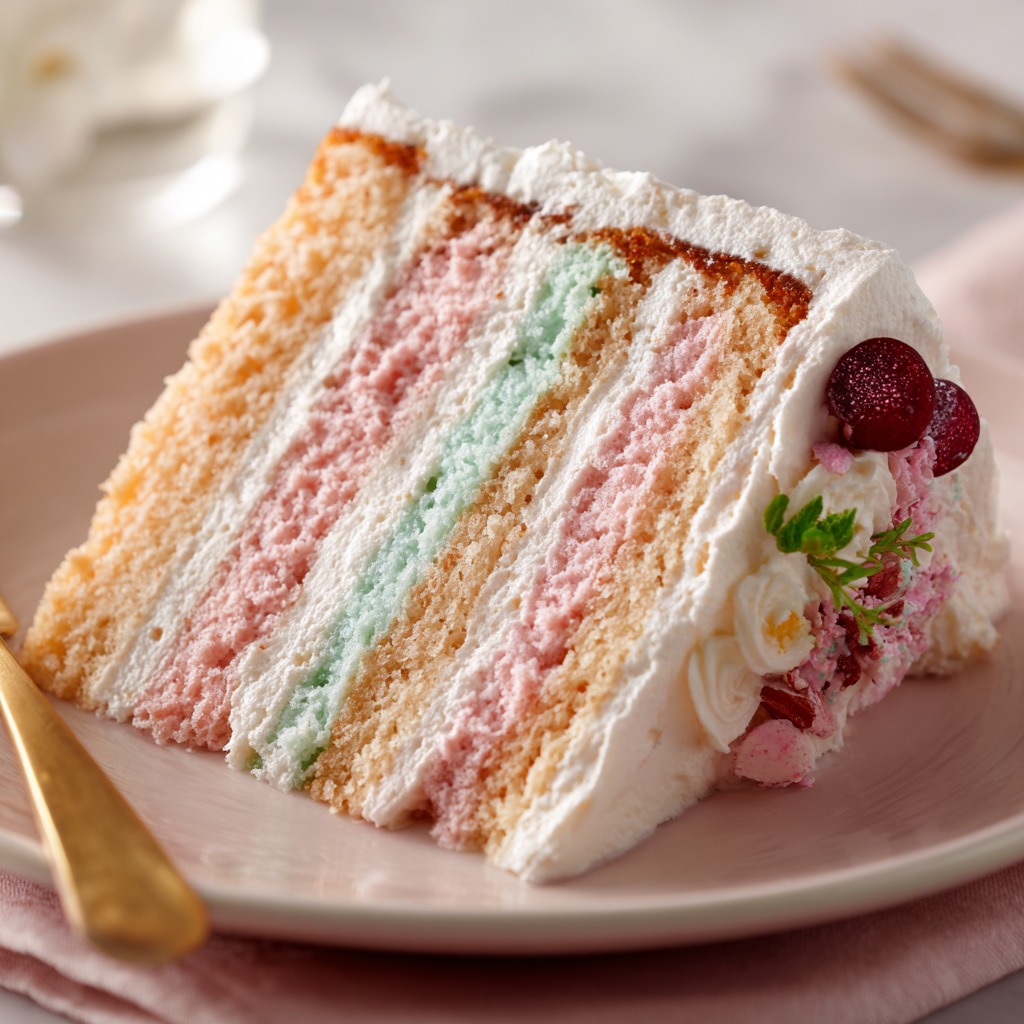
Tips & Tricks for Perfect
1. Use Room Temperature Ingredients
For the best texture and consistency, make sure your butter, eggs, and milk are at room temperature before you start baking. Cold ingredients can cause the batter to curdle or not mix properly, resulting in a dense and uneven cake. Allowing them to come to room temperature will help them blend seamlessly into the batter.
2. Don’t Overmix the Batter
While it’s tempting to mix everything vigorously, overmixing the batter can lead to a tough cake. Once you’ve added the dry ingredients to the wet, mix just until everything is incorporated. This helps prevent the formation of excess gluten, ensuring a light and fluffy texture.
3. Choose the Right Cake Pan
Use the right-sized pans to ensure the cake layers bake evenly. If you’re using multiple layers or colors, it’s best to use 8-9 inch round pans for even cooking. If you want to experiment with different shapes or a more intricate design, be mindful of the size and how it might affect baking time. Always line the pans with parchment paper and lightly grease them to prevent the cake from sticking.
4. Incorporate Bold Flavors Carefully
Atomic cake is all about vibrant flavors, but balance is key. While adding exotic flavors like spices, alcohol, or fruit purees can take your cake to the next level, be careful not to overpower the cake. Start with a small amount of each flavoring and taste the batter before adding more. This ensures you don’t end up with a flavor that’s too strong or clashes with the others.
5. Use Gel Food Coloring for Bright, Vibrant Layers
For intense color effects, use gel food coloring instead of liquid food coloring. Gel colors provide much more vibrant and consistent results without watering down the batter. You can experiment with different color combinations to create bold and eye-catching patterns in the cake layers, like ombré or marble effects.
6. Baking Time and Temperature
Every oven is different, so be sure to check the cake’s doneness with a toothpick inserted into the center. If the toothpick comes out clean, it’s done. Keep in mind that lower temperatures (around 325°F) can help prevent the cake from rising too quickly and creating cracks or an uneven texture.
7. Add Moisture with Syrups or Glazes
If you want to add extra moisture and flavor to your cake, consider brushing the cake layers with flavored syrups or simple syrups (like vanilla or citrus) before frosting. This helps keep the cake moist and adds an extra layer of flavor that complements the cake’s base.
8. Chill Layers Before Assembling
Once your cake layers have cooled, chill them in the fridge for at least 30 minutes before assembling. This helps the cake firm up, making it easier to handle while decorating. Chilled layers are less likely to crumble when you cut or frost them.
9. Layering and Frosting Tips
When layering your cake, spread frosting or filling evenly and avoid overloading the layers. If you’re making an atomic cake with multiple colors or flavors, be careful to align the layers neatly for a professional look. Use an offset spatula for smooth and even frosting on the cake’s sides and top.
10. Add a Fun Element with Dry Ice or Liquid Nitrogen
For a truly “explosive” effect, you can use dry ice or liquid nitrogen to add a theatrical touch to your cake. If using dry ice, place it in a safe container at the base of the cake, and be sure not to have it touch the cake directly. Liquid nitrogen can be poured carefully over the cake to create fog, adding a magical, “atomic” effect as it cools down the dessert.
Important Tip: Handle liquid nitrogen and dry ice with caution, as they can be hazardous if not handled correctly. Always follow safety guidelines and avoid touching them directly with your hands.
11. Decorative Elements: Get Creative
Decorating the cake is a fun way to personalize the atomic cake. Consider using edible glitter, candy atoms (like pearl-like sugar balls), or even fondant accents to enhance the cake’s “atomic” theme. You can also make 3D decorations, like sugar or chocolate molecules, to complete the look.
12. Serve at the Right Temperature
Atomic cake is best served at room temperature. While it may be tempting to serve it straight from the fridge, chilling the cake for too long can affect the texture and flavor. Let the cake sit out for at least 15 minutes before serving to allow the flavors to fully develop.
13. Plan Ahead for Layering and Colors
If you’re planning on making a multi-colored atomic cake, try layering and freezing the cake layers separately before assembly. This makes it easier to stack them without them shifting or crumbling. You can also freeze the layers in advance to ensure they stay firm during the frosting and decorating process.
14. Don’t Be Afraid to Experiment
The atomic cake is all about experimentation and creativity. Feel free to swap out ingredients based on your personal preferences. You can try different fillings like marshmallow fluff, caramel, or ganache, or add textures with crushed nuts, candy, or popcorn. Play around with color schemes to create a design that is uniquely yours.
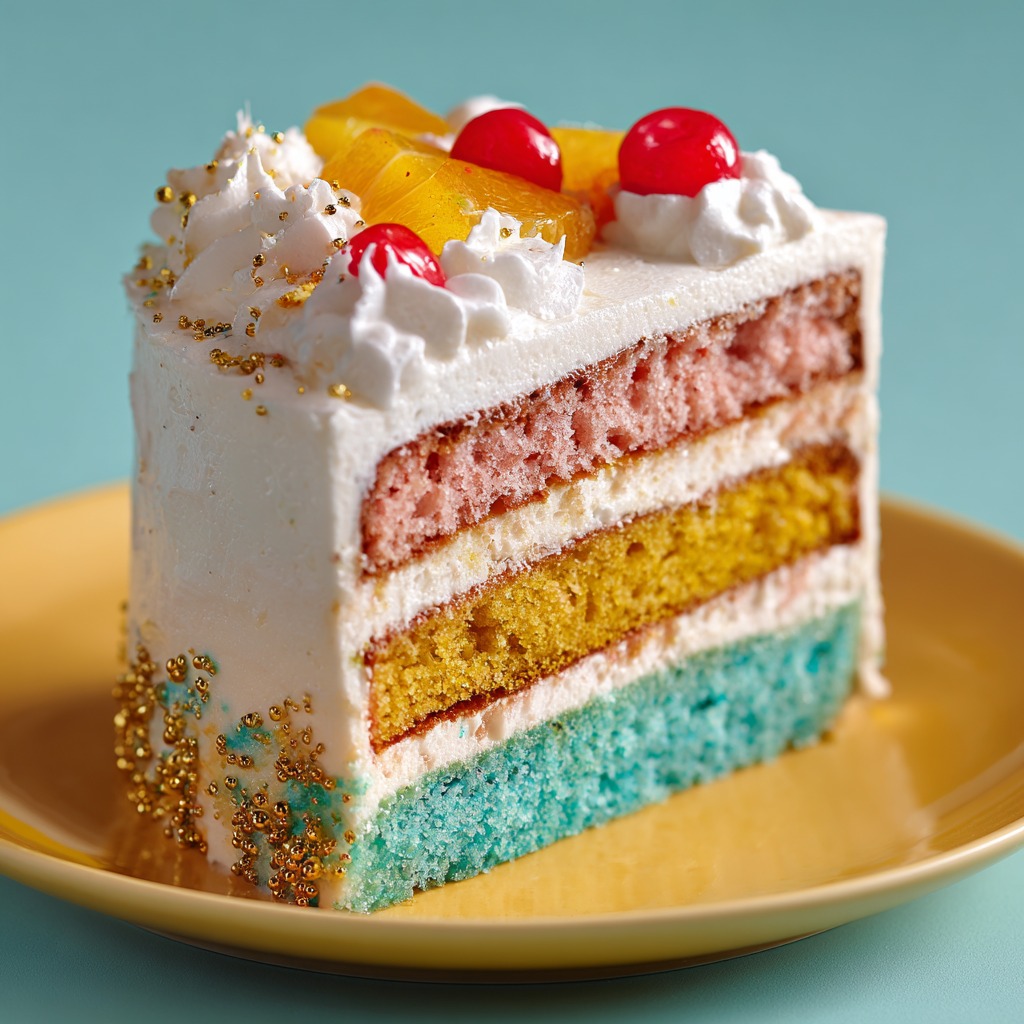
Variations of Atomic Cake
1. Chocolate Atomic Cake
For all the chocolate lovers out there, a chocolate atomic cake is a delicious variation. You can make a rich chocolate cake batter, layering it with a silky chocolate ganache or a mousse-like filling. You can also incorporate different types of chocolate—dark, milk, and white—into the layers to create a decadent, multi-flavored experience. Adding cocoa powder or melted chocolate into the batter ensures that the cake has a deep, rich chocolate flavor. A chocolate atomic cake also pairs wonderfully with a layer of chocolate frosting or ganache on top, making it even more indulgent.
2. Fruit-Flavored Atomic Cake
For a lighter, fruity twist on the classic atomic cake, you can experiment with fruit-flavored batters. Think lemon, orange, or passion fruit for a zesty, refreshing flavor profile. You can incorporate fruit purees into the cake batter and layer the cake with fruit-based fillings like raspberry or strawberry jam, or even mango curd. This version is perfect for summer parties or weddings where you want a refreshing, citrusy option that still delivers the explosive, eye-catching presentation.
3. Red Velvet Atomic Cake
The red velvet atomic cake is a stunning variation of the classic red velvet cake, which is known for its rich flavor and vibrant color. Instead of the traditional single-layer red velvet cake, try layering it in multiple colors and filling it with a tangy cream cheese frosting. The deep red color creates a dramatic contrast when layered with bright, colorful batters, making it an eye-catching showstopper. The cream cheese frosting adds a tangy bite that perfectly complements the sweetness of the cake layers.
4. Vegan Atomic Cake
For those following a plant-based diet, a vegan atomic cake can be just as delicious and explosive in flavor. Substitute traditional ingredients like eggs and dairy with plant-based alternatives such as almond milk, coconut oil, and flaxseed eggs. You can also use vegan-friendly food coloring and fillings such as coconut whipped cream or cashew-based frosting. This vegan version still allows you to enjoy the vibrant colors and creative flavors of the atomic cake while adhering to a vegan lifestyle.
5. Matcha Atomic Cake
For a more sophisticated and earthy twist, consider a matcha atomic cake. Matcha, the finely ground powder of green tea leaves, adds a unique flavor that balances the sweetness of the cake with a slightly bitter note. Matcha works beautifully in multi-layer cakes where the green color can contrast with bright, colorful layers of fruit or cream. The slightly earthy flavor of the matcha pairs well with creamy frosting, making it a perfect choice for an elegant, modern dessert.
6. Caramel & Salted Pretzel Atomic Cake
For a sweet and salty flavor profile, try a caramel and salted pretzel atomic cake. This variation uses layers of caramel cake, topped with crushed salted pretzels for a crunchy, savory contrast. Fill the cake with salted caramel sauce or a rich buttercream frosting that has a hint of sea salt. The combination of sweet, salty, and crunchy elements creates a unique dessert that’s both unexpected and delicious.
7. Coffee and Hazelnut Atomic Cake
For a more decadent and nutty version, a coffee and hazelnut atomic cake will be an indulgent treat. Infuse the cake layers with coffee for a rich, slightly bitter flavor, and add hazelnut cream or hazelnut paste to the frosting or filling. The combination of coffee and hazelnuts provides a delightful contrast, with the bitterness of the coffee balancing out the sweetness of the cake and frosting. This variation is perfect for coffee lovers or any occasion where you want a more complex flavor.
8. Gluten-Free Atomic Cake
For those who are gluten-sensitive or have celiac disease, a gluten-free atomic cake can be just as spectacular. You can make a gluten-free version by swapping all-purpose flour with almond flour, rice flour, or a gluten-free flour blend. The key to a successful gluten-free atomic cake is getting the right texture, so it’s important to add enough binding agents like xanthan gum or guar gum. The flavor can be kept just as rich and vibrant, and you can still enjoy the striking layers and explosive presentation.
9. Peanut Butter & Jelly Atomic Cake
A fun and nostalgic variation of the atomic cake, the peanut butter and jelly atomic cake incorporates the classic pairing into a more sophisticated dessert. The cake layers can be made from a peanut butter-flavored cake base, with a grape jelly or strawberry jam filling between the layers. Top the cake with peanut butter frosting and sprinkle crushed peanuts on top for an added crunch. This combination is sure to bring a sense of familiarity and comfort with a delicious, elevated twist.
10. S’mores Atomic Cake
If you love the flavor of s’mores, this variation is perfect. The base of the cake can be made with chocolate and graham cracker crumbs, and the layers filled with marshmallow fluff or toasted marshmallow frosting. Adding a few chocolate ganache drips on top and a sprinkle of crushed graham crackers completes the s’mores experience. This cake has a great balance of chocolatey richness, sweetness, and a bit of crunch, making it a fun twist on the traditional atomic cake.
11. Tiramisu Atomic Cake
For fans of Italian desserts, a tiramisu atomic cake is a delicious and creative variation. Instead of the typical sponge cake, this version uses layers of coffee-soaked ladyfingers or a coffee-flavored cake. The layers are filled with a mascarpone cream and dusted with cocoa powder. This tiramisu-inspired atomic cake combines the bold flavors of coffee, cocoa, and mascarpone to create an unforgettable dessert.
12. Rainbow Atomic Cake
If you want to make a truly vibrant and eye-catching version, the rainbow atomic cake is the way to go. Instead of using a single color, create multiple layers using different colored batters to make a visually striking cake. You can use natural food coloring or even different fruit purees (like blueberry, strawberry, and mango) to achieve the rainbow effect. The bright colors make the cake a true showstopper at any party or event.
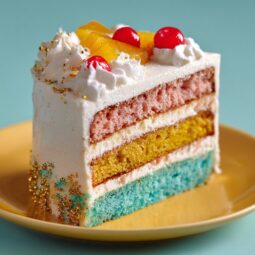
Atomic Cake
Equipment
- 2-3 round cake pans (8 or 9 inches)
- Electric mixer (or stand mixer)
- Mixing bowls (for wet and dry ingredients)
- Sifter or fine mesh strainer
- Offset spatula (for frosting)
- Piping bags (optional, for decorative frosting)
- Toothpicks (for checking doneness)
- Cooling rack
- Parchment paper
- Measuring cups and spoons
- Food coloring (gel or liquid)
- Optional: Dry ice or liquid nitrogen (for dramatic effect)
Ingredients
- For the Cake:
- 2 ½ cups all-purpose flour
- 2 tsp baking powder
- 1 ½ cups sugar can mix white and brown sugar
- ½ cup unsalted butter room temperature
- 4 large eggs
- 1 cup milk or cream
- 1 tsp vanilla extract
- Food coloring gel or liquid
- 1 tsp salt
- Optional: Flavoring e.g., lemon zest, coffee extract, or fruit purees
- For the Frosting/Filling:
- 1 ½ cups heavy cream for whipped cream frosting or 2 cups cream cheese (for cream cheese frosting)
- 2 cups powdered sugar
- 1 tsp vanilla extract
- 1/2 cup butter softened
- Optional: Fruit jam or puree e.g., raspberry, strawberry, or mango
- Optional: Ganache or chocolate frosting for extra richness
- Optional for dramatic effect:
- Dry ice or liquid nitrogen for theatrical presentation
Instructions
- Preheat and Prepare: Preheat your oven to 350°F (175°C). Grease and line your cake pans with parchment paper, ensuring they’re ready for the batter.
- Mix Dry Ingredients: In a large bowl, sift together the flour, baking powder, and salt.
- Cream the Butter and Sugar: In a separate bowl, beat the butter and sugar together using an electric mixer until light and fluffy.
- Add Eggs: Add the eggs one at a time, mixing well after each addition. Then add vanilla extract and any additional flavorings (e.g., lemon zest, fruit puree, or coffee extract).
- Combine Wet and Dry Ingredients: Gradually add the dry ingredients to the wet ingredients, alternating with the milk (or cream). Mix until smooth and combined.
- Divide and Color: If making a multi-colored cake, divide the batter into separate bowls and add food coloring to each, mixing until the desired color is achieved.
- Bake the Cake Layers: Pour the batter into the prepared cake pans and bake for 25-30 minutes, or until a toothpick inserted into the center comes out clean. Allow the cakes to cool in the pans for 10 minutes before transferring them to a wire rack to cool completely.
- Prepare the Frosting: While the cake cools, make the frosting. Beat the cream or cream cheese, powdered sugar, and butter until light and fluffy. You can add additional flavorings or fruit purees to the frosting for extra flavor.
- Assemble the Cake: Once the cakes are completely cool, frost between each layer with your frosting or filling of choice. Stack the layers and frost the top and sides of the cake. You can use a piping bag to create decorative swirls or designs.
- Optional: Add Dramatic Effects: For an added “atomic” effect, you can use dry ice or liquid nitrogen for smoke effects. Be sure to follow safety precautions when handling these substances.
- Serve and Enjoy: Slice the cake and enjoy the explosive flavors and vibrant colors. Allow the cake to sit at room temperature for about 15 minutes before serving for the best texture.

Notes
- Coloring: Use gel food coloring for more vibrant and stable colors in the batter. If you’re creating multi-colored layers, be sure to evenly distribute the colors to avoid mixing them too much.
- Flavor Variations: You can add any flavoring to the cake batter or frosting, such as lemon zest, coffee, chocolate, or even a bit of alcohol (rum or orange liqueur).
- Frosting Options: You can use different frostings, such as chocolate ganache, whipped cream, or even cream cheese frosting depending on the flavor profile you’re going for.
- Theatrical Presentation: For an added dramatic effect, consider serving the cake with a small piece of dry ice or liquid nitrogen to create smoke as you cut into the cake. This works especially well for themed parties like New Year’s Eve or science-inspired events.
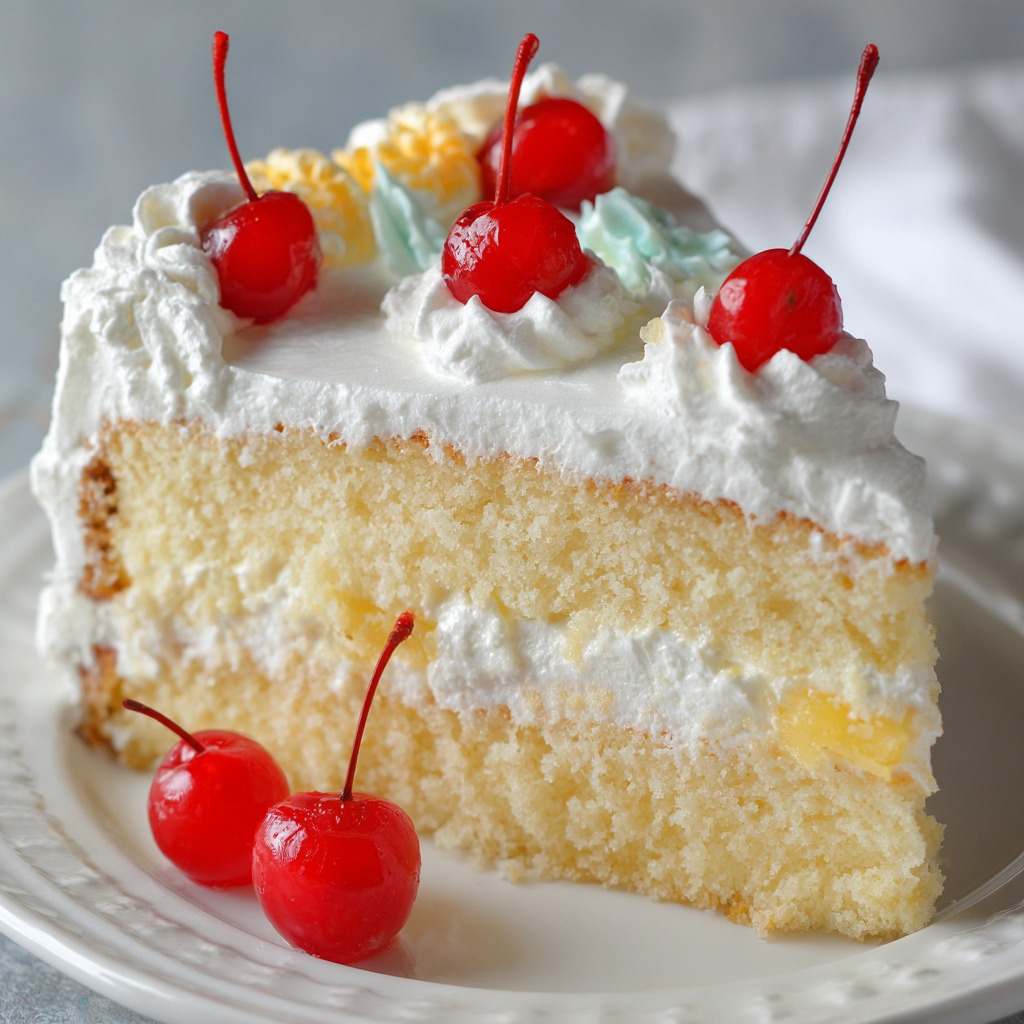
- Vegan/Gluten-Free: To make this recipe vegan, substitute dairy ingredients with plant-based alternatives (such as almond milk and flaxseed eggs) and use a gluten-free flour blend to replace all-purpose flour.
hare Your Twist!
The beauty of atomic cake lies in its versatility and endless potential for creativity! Feel free to experiment with different flavors, colors, and presentation styles.
- Flavor Customization: Add your favorite flavor to the layers or frosting—how about a zesty lemon or a decadent chocolate? You can even incorporate fun fillings like caramel or marshmallow fluff for an extra surprise.
- Color Play: Mix up the food coloring to create vibrant, bold patterns. Why not try a neon theme or even a galaxy-inspired look?
- Dramatic Effects: Want to take it a step further? Try serving your cake with a touch of dry ice or liquid nitrogen for a showstopping smoky effect.
- Themed Cakes: From Halloween to space-themed parties, tailor the cake’s design to match your event—think star-shaped decorations or glowing elements.
What’s your twist? We’d love to see how you make this atomic cake your own! Share your creations with us and tag us on social media.
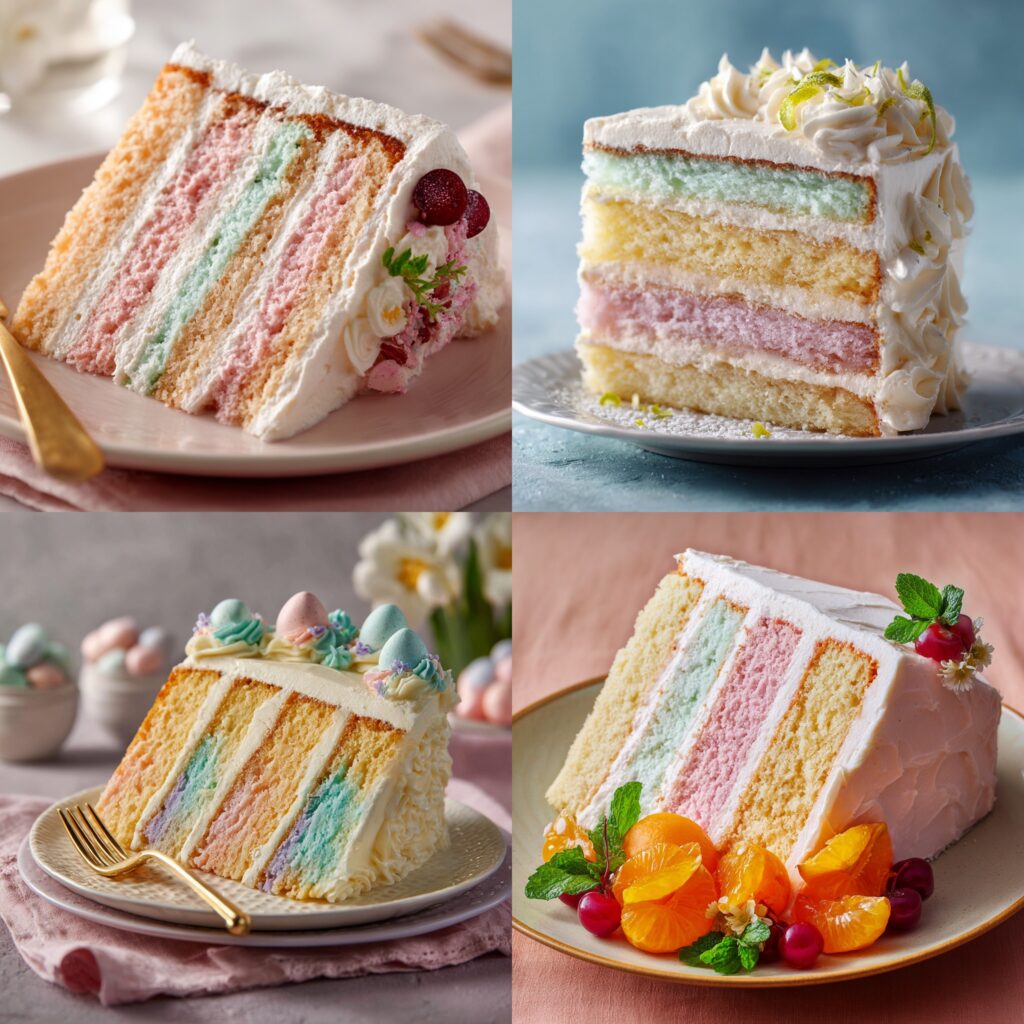
FAQs:
Frequently Asked Questions (FAQs)
What is an Atomic Cake?
Atomic Cake is a vibrant, multi-layered dessert with bold flavors and colorful layers, often decorated with dramatic effects like edible glitter or smoke from dry ice for a stunning presentation.
Can I customize the flavors of an Atomic Cake?
Yes! You can mix and match flavors such as chocolate, citrus, or vanilla. Add fruit purees or spices like cinnamon or matcha to create a unique flavor profile.
How do I store leftover Atomic Cake?
Store leftovers in an airtight container at room temperature for up to 2-3 days, or refrigerate for longer freshness. You can also freeze individual slices for up to 1 month.

